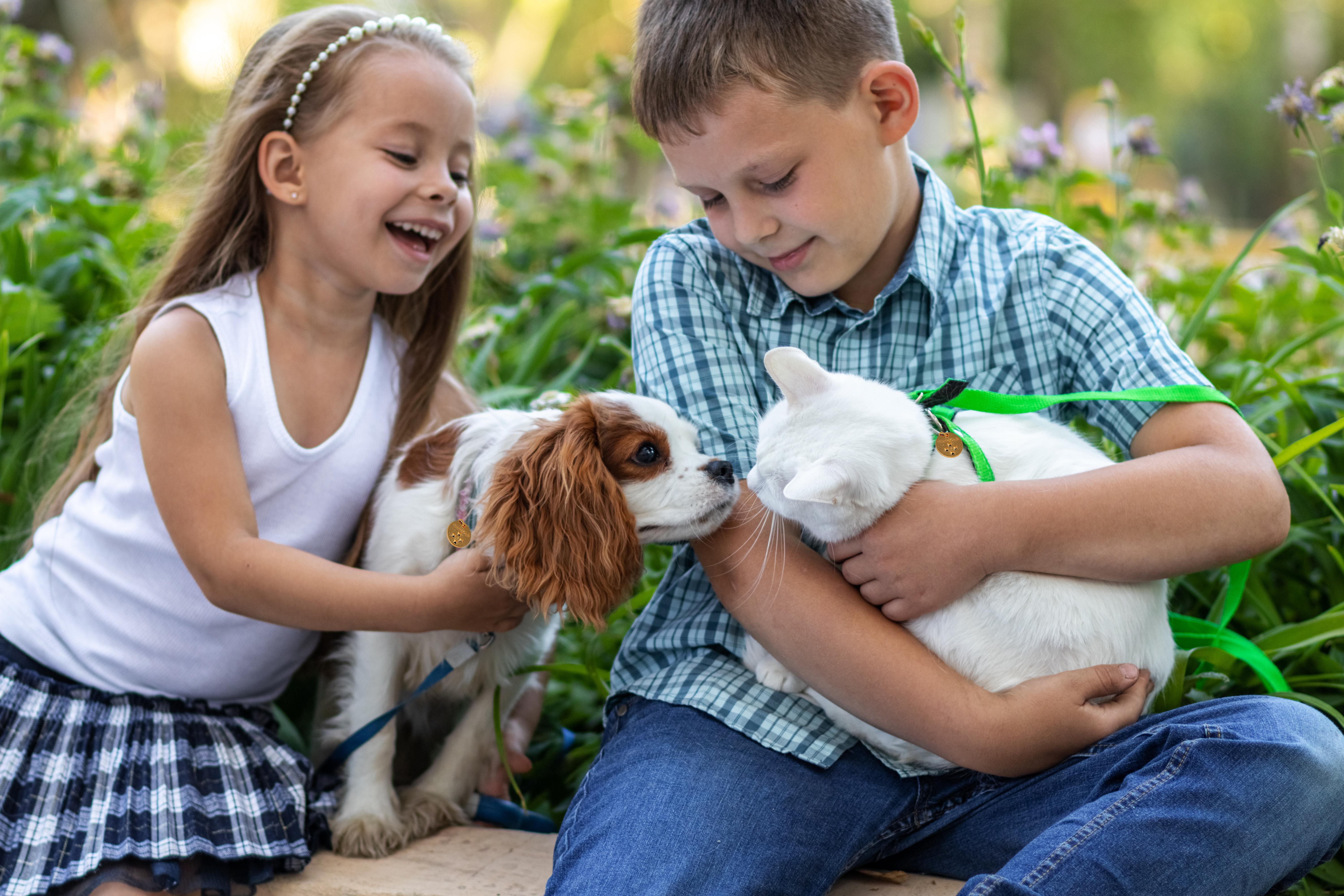






Bonfire Night is fast approaching, so PDSA, the vet charity for pets in need, is urging pet owners to take steps to help prevent their furry family members from becoming anxious this fireworks season.
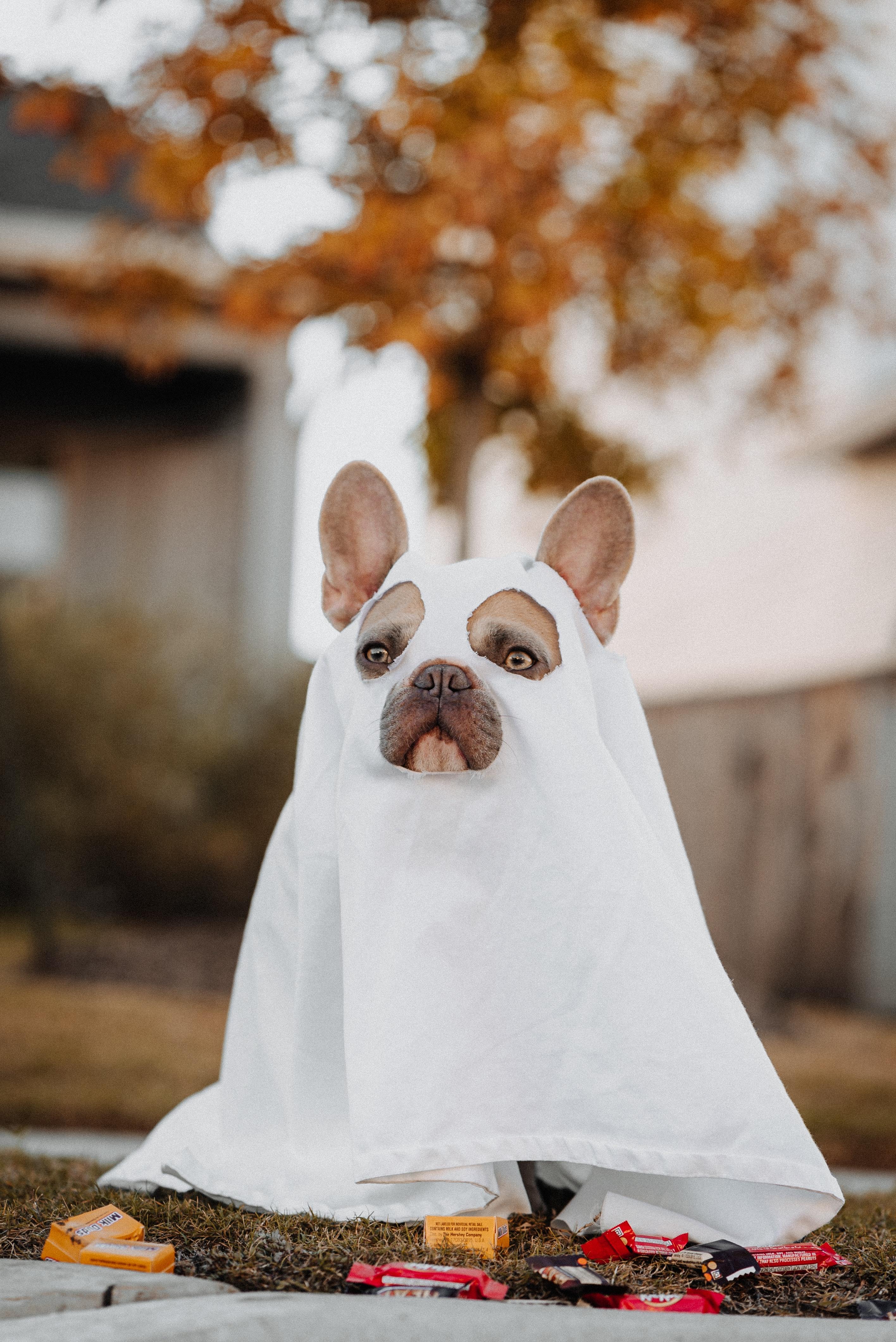
Bonfire Night is fast approaching, so PDSA, the vet charity for pets in need, is urging pet owners to take steps to help prevent their furry family members from becoming anxious this fireworks season.
Many of our pets’ senses are far more acute than ours, so loud noises and bright flashes can be overwhelming, making fireworks season a potentially traumatic and anxious time. In fact, the 2022 PDSA Animal Wellbeing (PAW) Report revealed that 41 per cent of dog owners and 30 per cent of cat owners said their pets were afraid of fireworks.
PDSA Vet Nurse Nina Downing said: “In 2021, in our 48 Pet Hospitals across the country we saw 1,200 animals with firework related issues such as phobias and injuries, highlighting the
real impact on our furry friends. November can be an especially scary period for our pets because of this, but taking the time to prepare them for our celebrations can make a huge difference.
Luckily, there are some simple steps you can take to help four-legged family members feel more comfortable this November.
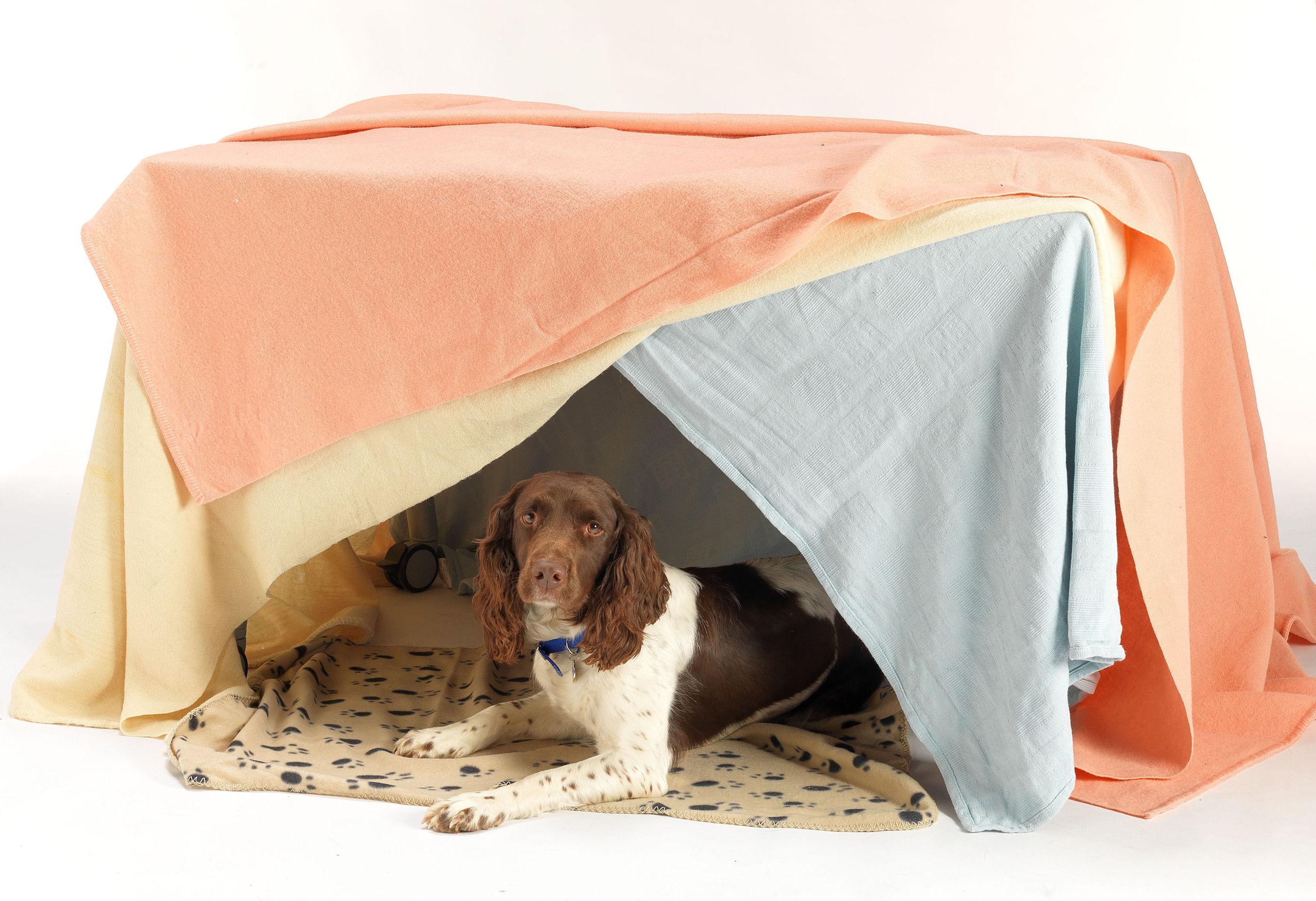
“Talk to your vet if you know your pet becomes distressed by fireworks – they may be able to prescribe medication to help. The earlier you begin desensitising pets to the sounds that come with Bonfire Night, the less likely they are to have a negative association with them. Play firework noises quietly throughout the house and reward your pet with praise and a healthy treat when they remain calm. Gradually increase the noise but stop immediately if they begin to show any signs of distress – try again at a lower
A ‘fireworks den’ can help calm an anxious pet.volume once they feel at ease. It’s important to go at your pet’s pace - remember some animals may have a lower tolerance to loud noises than others.
“Music can be really helpful to drown out the sound of bangs, but if your pet isn’t used to the tunes, that could be a surprise in itself. Use your own playlist, or try one we’ve created, and play it around the house in the days leading up to Bonfire Night, then when you need the music to mask the noise, your pet should be used to it. Remember that plugin pheromone diffusers can also help to relax your pet – for the best results these need to be set up as far in advance of Bonfire night as possible.
3. Keep them safe
“Make sure dogs have been to the toilet and cats are indoors well before dark – you can offer their dinner a bit earlier so they know what time to come home. Remember, cats will need litter
trays, so they can stay safely indoors. Frightened pets can go into fight or flight mode and may try to escape when they hear loud bangs, so make sure windows, doors, cat flaps, and doggy doors are secure so that your pet stays safely inside. Check for any small holes or
blankets, bedding, and pillows which can help to muffle the sound of loud bangs - cats may prefer these up on high shelves. Their favourite toys may also help take their mind off the noise.
gaps in fence panels that your pet may be able to squeeze through in a panic if the worst happens and they escape from the house, and make sure your microchip details are up to date!
“Creating a space where your pet feels safe and secure will give them somewhere to go if they feel anxious. Choose a quiet room where they feel comfortable. Create a ‘den’ they can retreat into that has thick
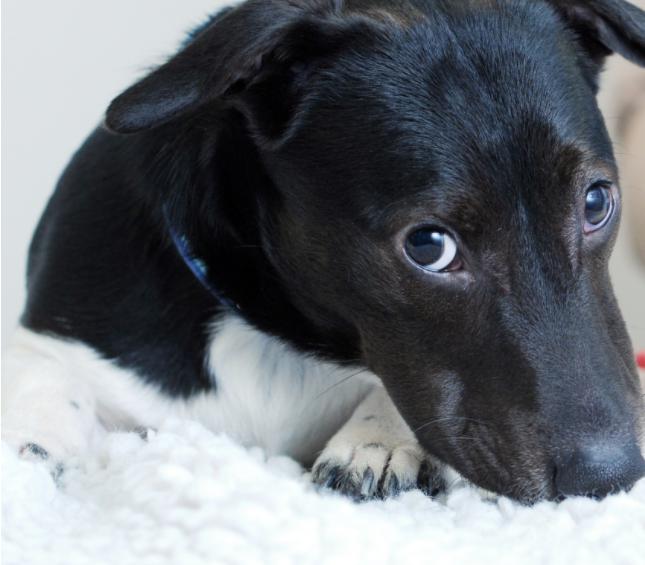
“Writing the dates and times of any local displays in your calendar or setting a reminder on your phone means you can plan to be home to provide reassurance. Knowing what’s on in advance also allow you to ensure your pet is safely indoors before fireworks begin, and gives you plenty of time to prepare their safe space.”
For more advice on how to prepare for Bonfire Night with your pets, please visit https://www.pdsa.org.uk/ fireworksready

Following the workplace upheavals of recent years, many businesses are still in the process of moving home workers back into the main office building. That comes hand in hand with a focus not simply on productivity but also on employees mental and physical health. Well-behaved dogs in the workplace can have big benefits. Here, VICKY SKINNER, Head of Education at the National Pet College, explains why.
A recent study found that 54% of pet owners would consider quitting their job if their employer didn’t allow them to take their dog to work, allowing dogs into the workplace is

definitely something employers should consider.
The benefits of having a dog in the workplace are not just related to employees turning up and being less anxious about being separated from their dogs or worrying about their canine companions behaviour while left at home.
Workers with dogs around them report improved mental health and wellbeing when undertaking stressful activities, such as dealing with high workloads and tight deadlines. And while anecdotally people may feel less stressed the science also shows that beneficial changes are taking placing inside the body when interacting with dogs, these include:
• decreased heart rate
Photo by Jamie Street on Unsplash• decreased blood pressure
• a decrease in the levels of the stress hormone, cortisol. Persistently high levels of cortisol have been linked to a number of health conditions including anxiety, depression and problems with sleeping and concentration.
• a release of the feelgood hormone oxytocin. Oxytocin is linked to positive emotional states and emotional regulation, easing stress and promoting growth and healing.
Researchers studying the wider benefits of dogs in the workplace found employers reported increased physical fitness and a healthier lifestyle due to the increased opportunities to walk the dog during breaks, resulting in improved concentration and cognitive abilities, resulting in higher levels of productivity and creativity.
Some employers may have concerns that dogs may prove to be a distraction in the workplace taking regular, short breaks in known to actually improve productivity. Having a dog in the workplace also aids social interactions, making the
office a friendlier place to be and boosting morale and importantly improved job satisfaction. Some businesses may choose to keep office dogs in the background, however introducing a dog to a client
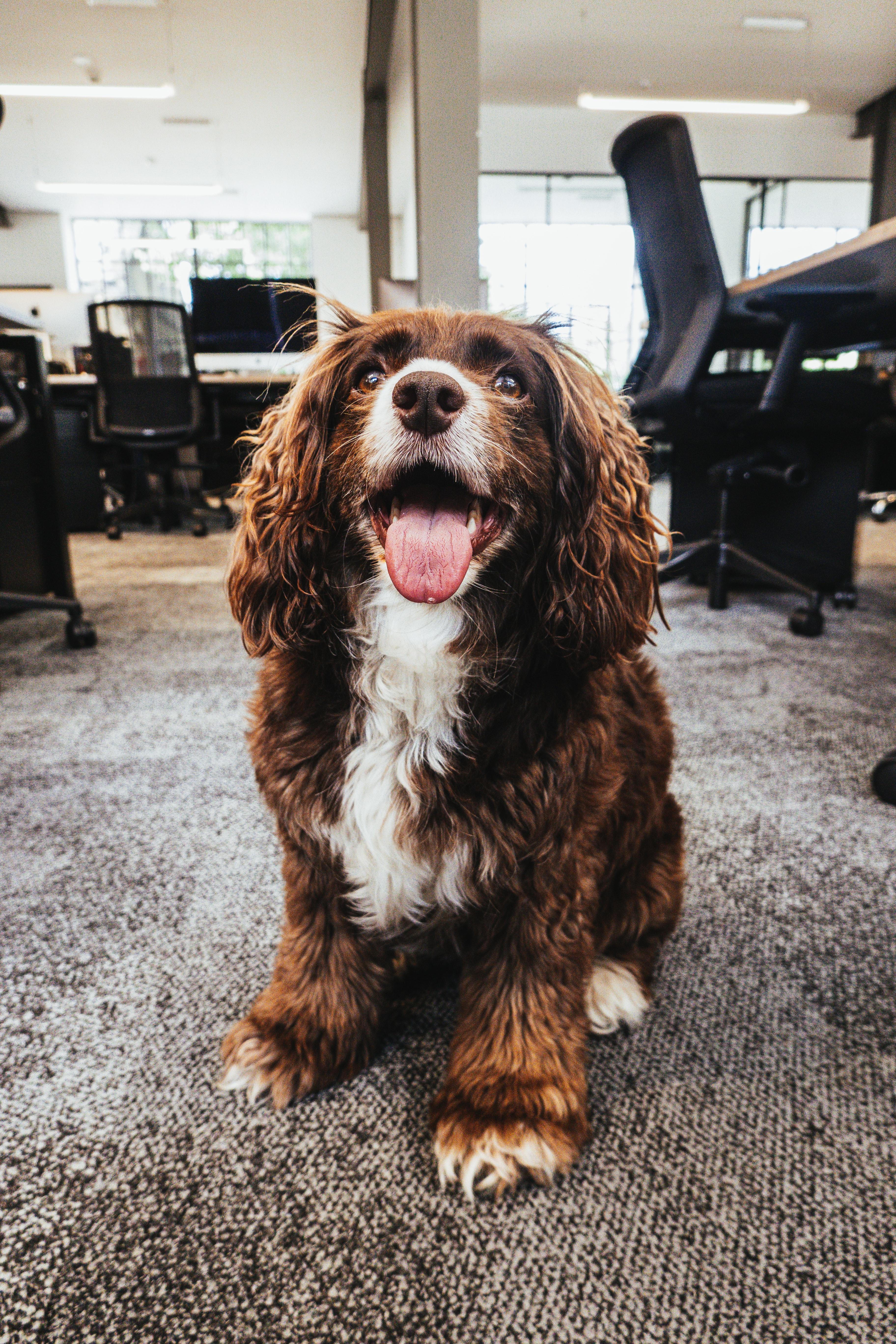
legal and practical issues around having dogs in the office, including the number of dogs on site, hygiene and waste disposal, how safe and secure the environment is for the dogs, how all colleagues feel about sharing their workspace with a four-legged companion and how the dogs cope with busy, noisy environments.
can allow them to relax and initiate friendly conversation.
However, bringing dog into the workplace has implications, both for the welfare of the dog and the practicalities of office life.
It is important that businesses wishing to provide a dog friendly culture consider the
The National Pet College (NPC) offer a unique Dogs in the Workplace online course, aimed at equipping employers and employees who want to share their working space with dogs in a responsible and safe way. With separate modules for the employer to develop a suitable ‘Dogs in the Workplace’ policy and for employees to ensure their dog is a suitable candidate to have in the office, the courses will ensure sensible and robust procedures are in put place that protect the business, other workers, clients and ensure the welfare of dogs themselves. In addition, employers are supported in developing a ‘doggy code of conduct’ and suitable risk assessments.
Further information: www.nationalpetcollege.co.uk or via Instagram
@NationalPetCollege.
Workers with dogs around them report improved mental health and wellbeing.

DR DAVID CLIFF talks to Sara Atkinson, Founder and CEO of Yorkshire Cat Rescue (YCR), a unique cat charity with national reach, in the heart of Yorkshire.

Yorkshire is known for many reasons. Mother Shipton's Cave, Wars of the Roses, the exaggeration of the “a” and “e” in the quotation of "Barnsley". Singer and documentary maker Jane McDonald has made an affectionate documentary
biopic of her youth there and yes, who can forget the ubiquitous Sean Bean?
Undoubtedly, Yorkshire has a deep history and culture.
Less well known, and of equal pride is Yorkshire Cat Rescue (YCR), a small charity founded thirty years ago by Sara Atkinson. Sara's passion for cats goes back to her childhood, and she started caring for and receiving strays and abandoned cats in her mid-twenties.
"Originally it was me, then after a couple of years, a number of volunteers.
“It was apparent these beautiful creatures do not always get the best deal with people despite what they have to offer us. Sometimes it's about cruelty or abandonment, often people have died leaving their cat needing a home. I felt somebody had to respond.”
Thirty years on, YCR has grown from a handful of volunteers to a state-of-the-art cattery with fifteen staff plus twenty charity shop staff, dozens of volunteers, foster carers, supporters and an ability to reach right across the country.
Sarah and DavidIndeed, the name Yorkshire Cat Rescue, whilst being proudly local, sometimes masks the fact that although centred in Yorkshire, the charity’s reach is nationwide. "We will take cats from anywhere, they predominate from Yorkshire and Lancashire areas, the rehoming takes place nationwide and our foster carer facilities span right across the north-east".
The charity’s logo proudly proclaims ‘trusted by cats’.
"Cats can’t speak for themselves, they require human advocates, and
therefore it is important that we have a brand that cats, as our primary consumers, can rely on.
“Of course, we are attentive to foster carers and those receiving cats into homes to ensure that our services are well tailored to their needs, but it's the cats that ultimately come first", Sara explains.

The charity is often the last chance of hope for cats in real distress. Many charities, particularly larger ones, euthanise cats when they simply cannot cope with the numbers, or there are medical
challenges that are resource intensive. This is not the case for YCR. Sara explains: "We run appeals to ensure that cats get the care that they need. They should not be euthanised unnecessarily. The very term "euthanasia" means "a good death", but it's hardly the case, when cats do not receive the care they need simply because it has become too expensive or too challenging a prospect.”
Indeed, the charity’s "no kill policy" is comparatively rare, and Sara and her colleagues all seek to find another way.
Case in point is the ‘Scrapyard Kittens’. Four kittens were found by workmen being attacked by rats, abandoned in a scrapyard. Retrieved and after veterinary examination, all of the kittens were found to have congenital defects. One needed a jaw operation to prevent malformed teeth, but the other three had a condition wherein their eyelids would not shut requiring extensive surgery to correct.
"We were left with the dilemma that these kittens would suffer painful degenerative eye conditions untreated and would either need their eyes operated on or removed.

“It seemed such a shame to let these kittens live their lives in the dark and so we launched an appeal to raise the thousands needed to give them the start in life they should have had.”
Sara's appeal video is compassionate as it is moving. The no kill policy, unstated but completely evident within
showed Sara adoring these kittens with all the care and love that had taken her onto this path thirty years ago.
grateful there are like-minded individuals in our community who support us with donations, bequests and regular giving”.
The charity's website is populated by similar cases, cats that have suffered abuse, neglect, require treatments because of kitten breeding, which is every bit as abusive as puppy farms, cats with behavioural challenges that have come about as a result of poor care, the list goes on.
"The public response was marvellous. Of course, we had some people saying that post Covid the money should go to other areas of need, but that's always the case and these little ones needed help and in short order!
Often people will donate to preserve species or for an animal they personally know, but frequently the cats we get usually have no-one. I'm just so
“Cats offer us so much as a society. We have more people living alone than ever before. The companionship and positive impact on mental health is vital to any and we should be supporting cats when things go wrong", Sara says.
Eight-year-old "Father Toad" is a beautiful long haired black and white cat who was found next to his dead owner after many days. After a period of rehabilitation with YCR, he found a new forever home with a loving family providing a single cat environment that is very much needed.
‘Father Toad’“Matching cats to fosterers really helps the rehoming process", Sara says, adding, "we prefer it to keeping cats in the cattery wherever possible, it is more of a normal experience for the cats and gives us valuable insights into what their true needs are, making rehoming a more stable process.” Sara and her colleague’s expertise has travelled far and wide and YCR is often approached for advice and consultancy to help with cats.
In common with so many charities, it would like to do more. It is neither a large charity nor a small one. It is classically one of those organisations that is “too big to be termed small and too small as a charity to be termed big"
Sara muses. The problem is, demand often exceeds the modest resources of the charity.
Unlike other charities, Sara takes a modest stipend as chief executive, a gruelling role that involves living right next to the cattery and often being available 24/7. Her husband Colin works for the charity as a volunteer on a similar basis.

The charity hopes to expand this year to meet ever growing need, with the headwinds of cost-of-living crises together with post Covid, post Brexit challenges in the economy. Walking round the cattery, talking to the staff, it is evident that despite these pressures the need exists for this unique charity to continue its pioneering work on being the
last chance for so many adorable felines whose lives are changed and improved by this uniquely compassionate organisation.
Next to the cattery, is a garden of remembrance for the cats that were in such bad shape when found just could not make it despite the best efforts of the charity. Each cat is named there, and staff and supporters often go there to reflect. "We don't like failure”, Sara insists," it keeps us trying harder.”
To find out more, including how you can help this amazing charity, visit their website at: https:// yorkshirecatrescue.org
‘MC Hammer’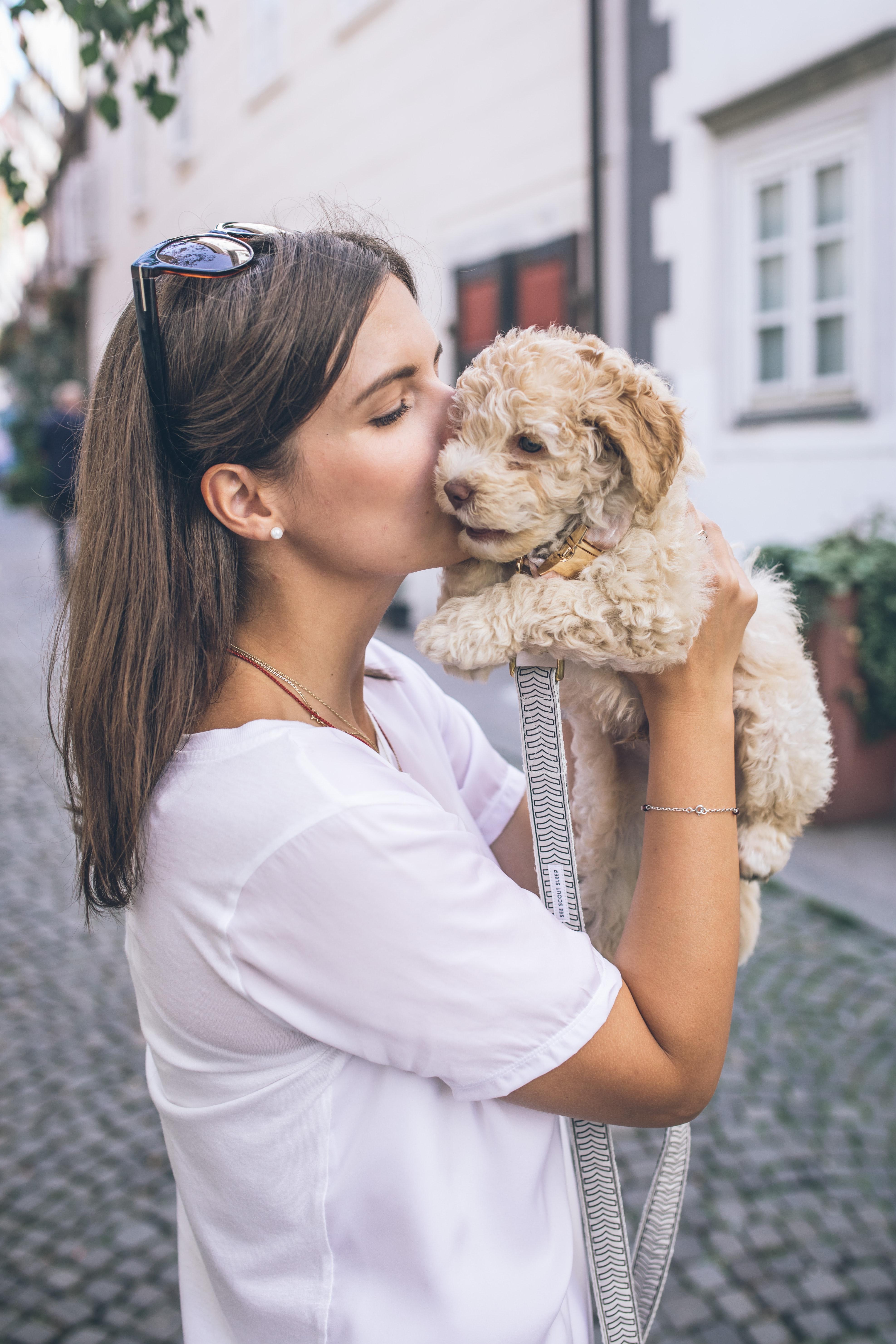
Once, when my wife’s brother visited us, he was about to ease himself down into one of our settees when I shouted, ‘Don’t. That’s Dora’s,’ and yanked him away from it. Gordon
nervously perched on the edge of a lumpy armchair as I explained that the settee was solely for the use of our little Yorkie-cross terrier. Gordon’s quizzical look did make me question whether I was going down with symptoms of O.D.D. –Obsessive Dog Disorder. If that is the case, then I’m not alone.
According to a survey of 1500 dog owners carried out by Samsung, a past Crufts sponsor, a third of Britain’s dogs have their own designated chair in the living room.
The Samsung survey also revealed that nine out of ten of us consider their dog a ‘fully-fledged’ member of the family. And despite me being a vet, who in the past may have admonished clients for excessive indulgence of their pet, the same now goes in my household. Dora rules the roost. And all because I’ve been
little dog. But that doesn’t mean I’m suffering from O.D.D. Or does it?
We do of course chat to each other. When I go down to the kitchen first thing to make a cup of tea, I always greet Dora with a ‘Good morning sweetiepie, how are you?’
From under her quilted duvet next to the Aga, she opens her eyes and looks up at me. She doesn’t need to talk as such. It’s all there in the frenzied wag of the tail and the eagerness in those eyes. Her way of saying, ‘Hi, I’m pleased to see you.’
utterly captivated by the button-brown eyes, the tufted ears and endearing looks of the little rescue terrier that came into my life ten years ago as a scrap of a dog found wandering the streets of Birmingham. Who wouldn’t be? She’s a cute


Though I did get caught out one morning when she vacated her bed in favour of my chair in the study during the night. I hadn’t realised and found myself saying good morning to a rucked-up duvet devoid of dog.
I have to admit that during the day, there’ll be more conversations with her. But I wouldn’t call it unduly obsessive. Besides, I’m not the only one that does that.
Malcolm and Dora DoraAnother study done by MoreThan showed that 85 per cent of all dog owners talk to their pooches about relationships, work, family and finance. In the survey, 59 per cent of people said they talked to their pets because they felt at risk of sparking conflict if they shared their feelings with their human peers.

Relationship psychologist, Corinne Sweet says,’ Pets don’t judge, answer back or complain.’
I get a wag of confirmation. Whenever I’ve been out, on my return home, Dora rushes up to greet me, her tail shaking to and fro while my wife, Maxeen, asks curtly if I remembered to get some more milk. Mmm … I might feel like patting her on the head and kissing Dora. But I refrain. Which shows I’m not that obsessive.
Nor is it a symptom of O.D.D. when I empty out my pockets
and only remnants of dog treats and clean-up bags fall out. That’s just par to the course of owning a pooch.
Now, we know a dog’s diet is an important consideration for any owner. A fully balanced one, meeting all the nutritional canine needs. That’s the reason I spend hours meandering down the aisles of the pet warehouse. I study all the options available for Dora before going to the butcher’s and selecting a fresh cut of meat for her dinner, returning
Photo by Adam Griffith on Unsplashhome with a ready-meal for Maxeen and me. Not over the top, surely? After all, it is important to ensure Dora’s dietary requirements are met with something she enjoys and which doesn’t cause any bowel upsets. The latter’s an area where I do confess to being a little bit fixated – put it down to my veterinary training. But when Dora’s way ahead in the woods and I see her starting to crouch I instantly race up to her and make sure her business is mine as well and that all’s normal in that department.
As for treats, of course Dora gets titbits. Little bits of bacon are tossed on to the floor at breakfast time. A chunk of cheese is sliced off the pack in the fridge at coffee time. Dora particularly enjoys Wensleydale – perhaps an echo of her
Yorkshire roots. And at dinner time my meal is shared with her.
The Samsung survey discovered two in five do likewise. But you have to be careful you don’t over-do the treats. Some people comforteat when they’re distressed and then start to feed their dog treats during the day to ‘make them happy’. The result of that excessive pampering? An overweight dog. The Samsung survey found that one in five owners had to put their dogs on a diet as a result.
My love for Dora is not sentimentality. She’s good for me. Studies have shown that when you gaze into a dog’s eyes, there is the release of oxytocin, the ‘cuddle’ hormone and brain chemical known for

its role in love. Even more of an excuse to give her a cuddle and look lovingly into her eyes. I often wonder what Dora thinks of me, this biped that stomps around the kitchen, showering her with titbits, tickles and love. Are her feelings mutual? I once tried asking her that question when she was lying on the sofa next to me. She responded by turning to lick her privates.
One symptom of O.D.D. relates to sleeping arrangements. Dora has a comfortable dog bed in front of the Aga, lined with blankets. She’s never allowed upstairs to share our bed. A complete no-no. That rule stems from the time I had to deal with some clients whose Alsatian had taken to sleeping on their bed. When they wanted to retire the Alsatian bared its teeth and growled, refusing to budge. Those owners ended up sleeping in the spare room. Of course, Dora’s a tiny dog in comparison and very sweet natured. Even so I don’t like the thought of her sneaking in under the duvet, forcing me to the edge curled up like a question mark, toes exposed to the cold air. That would be very ODD.
Photo by Brooke Cagle on UnsplashThe Samsung survey also mentioned that one in four dog owners have given their mutt its own social-media profile. Samsung’s Andy Griffiths said, ‘It’s particularly interesting to see how we are sharing technology and involving our pets in this element of modern life.’ It makes me feel better to hear that as I have to confess Dora has her own bimonthly dog blog called Dora’s Diary on an international website for the more mature of us. It’s been running for over five years now and Dora writes about what’s been happening with reference to me - her Bossman - as I’m called. I’ve wondered whether that shows I’m suffering from O.D.D. Seems not as, according to that survey, it’s all part of modern trends. So, there you go.
A week or so back, I received an invite by email.
‘It’s Chloe’s birthday. She’s having a party,’ I informed Maxeen.

My wife looked puzzled. ‘Chloe who?’
‘Adrienne’s rough collie, Chloe. Dora’s been invited to her party
for a little get together with the mutts she meets on her walks. I’ll get a cake specially created for her.
‘Now look,’ I hear you say, ‘that just shows Malcolm’s got O.D.D.’ What nonsense. Dora loves chasing squirrels. So, a cake shaped as one will be the perfect treat for her. She’ll go nuts for it I’m sure.
on the village green next Saturday.’
Of course, I went. Chloe’s present from Dora was a jumbo hide bone. One of many given her by her doggy pals. Adrienne had made a bone-shaped cake.
There were jolly chase-me games with balls and frisbies being thrown in between frenetic tail wagging and bottom sniffing. All great fun. I don’t know when Dora was born as she’s a rescue. But September’s a nice time of year so I’ve pencilled in a date then
Malcolm Welshman’s memoir, An Armful of Animals, is available from www.amazon.co.uk at £7.99.
Kindle price £1.99. Bel Mooney of the Daily Mail says of the memoir, ‘A witty take on a young vet’s life that pet lovers will find endearing.’ Malcolm’s website is www.malcolmwelshman.co.uk
We are really excited to introduce the FleasGone tag! A chemical free tag exclusive to dog and cat owners across the UK helping them to protect their beloved pets from fleas and ticks. After continued global success, we think it’s amazing that FleasGone UK are reaching out to additional pet owners who are looking for a safe, long lasting chemical-free alternative to current flea and tick treatments.
The safe and simple solution has been scientifically proven to provide chemical-free, non -toxic protection against fleas and ticks without experiencing any unwanted side-effects. In the market, other available flea and tick treatments are not recommended for use on new-born puppies and kittens, this completely chemical-free, lightweight tag can be used sooner than other proven alternatives making it a completely safe option for all the family including your children and pets. Protecting your pets for up to 5 years makes this the ideal cost-effective solution.
Relying on the laws of physics, the tag enables pet owners around the world to provide their loved ones with the safest and the longest-lasting holistic pet protection against flea and tick infestation.
The FleasGone Tag is made with electromagnetically charged that forms a protective shield around your pet, interacting with the natural waves from the heart and is a key element in generating scalar waves that repel parasites. Scalar waves create a bio resonant field that is effective in treating a variety of medical conditions. ‘Scalar medicine’ is now widely recognised in the profession as a form of holistic, non-invasive therapy.
